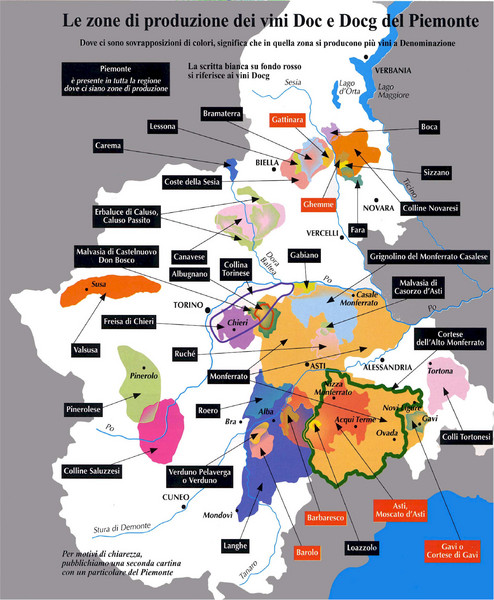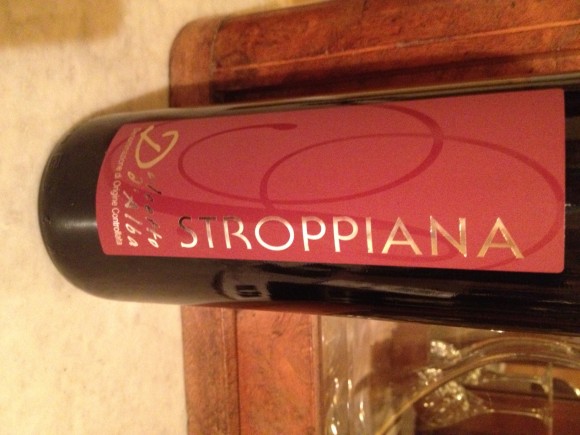2010 STROPPIANA Dolcetto D’Alba Doc
The name PIEMONTE means ‘at the foot of the mountains. It sits at the foot of the Western Alps, which encircle the region to the north and west, forming Italy’s naturally formidable border with France. To its south-east lie the northernmost Apennine Mountains.These low coastal hills divide Piedmont from its long, thin neighbour Liguria, which is all that separates Piedmont from the Mediterranean Sea.
Piedmont is often described as the ‘Burgundy’ of Italy, a reputation due to its many small-scale, family wineries and a focus on quality which sometimes borders on obsession. Nebbiolo grapes are behind four of Piedmont’s DOCGs: Barolo and Barbaresco (two of Italy’s finest reds), Roero and Gattinara. Nebbiolo wines are known for their ‘tar and roses’ bouquet, and the pronounced tannins. Barbera, a dark-skinned variety with good acidity and aromas of fresh plums and dark cherries. They are noticeably less tannic
The third red grape of Piedmont is Dolcetto, with several DOCs to its name. Despite what the most foreign wine guides state, the name Dolcetto has been erroneously translated ‘little sweet one’ Instead the local winemakers refer to the gentle hills area of production. Infact Dolcetto is usually used to make dry red wines with an appetizing, gently bitter finish.
2010 STROPPIANA Dolcetto D’Alba Doc
(100% mono-varietal DOLCETTO grape)
DOLCETTO grape an early ripening grape, Dolcetto produces soft-styled, fruit-driven wines with low acidity, particularly compared to those made from Nebbiolo and tangy Barbera, Piedmont’s two most popular red wine grapes. It is these low acid levels which have earned the vine its name Dolcetto, which means ‘little sweet one’. This is not the case of Stroppiana a complex Dolcetto d’Alba. A typical Dolcetto wine is intensely, brightly colored and offers dark, gently spicy aromas with earthy undertones of almonds – or walnuts in more tannic examples. Generally the wines are not designed for long-term cellaring, and should be consumed within three or four years of vintage.
The winery is owned by Dario STROPPIANA, who, aided by his wife Stefania, takes care of every production process, from the vineyard to the cellar.
“A definitely step up from standard Dolcettos. its aromas are reminiscent of lavender and violets with a hint of almonds. It has a characteristically purplish ruby-red colour, fresh black cherry fruit flavours, strawberries, raspberry, encased in sweet spices and a slightly bitter almond finish. The extra flavour intensity makes the wine a good partner to quite highly flavoured dishes like lamb biriyani. Try with pates, gammon joint, roast chicken or pork- lambs chops or chill lightly and serve with cold meat. Serve at 16-18 c
VINEYARDS: situated in the localities of S.Giacomo, Rivalta di La Morra and Gabutti Bussia in Monforte d’Alba .VINEYARD EXPOSURE: south-west. ALTITUDE: 400 m above sea level.YEAR PLANTED: 1963. YIELD PER HECTARE: 5000-6000 kilograms (5-6 metric tonnes). ALCOHOL CONTENT: 13% vol. AVERAGE ANNUAL PRODUCTION: 5000 bottles.
WINEMAKING PROCESS: the grapes are harvested in the middle of September and undergo soft pressing. The must ferments on skins for about 10 days at a controlled temperature no higher than 30-32 °C. It is pumped over at least 4 times a day to fully extract the characteristic ruby red colour with violet hues and the tannins.
AGEING: upon completion of fermentation the wine is transferred to steel tanks for racking off with frequent decantation. It is here that malo-lactic fermentation takes place. The wine is bottled in summer, when the weather is hot, and is released for sale after a month in the bottle.
http://www.cantinastroppiana.com
for infos s_cassina@hotmail.com


